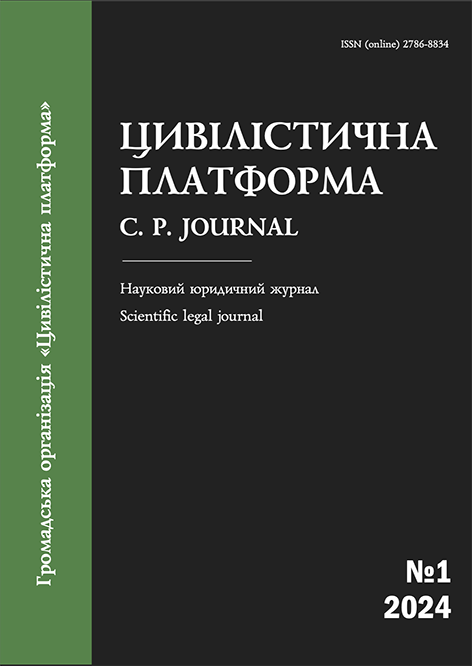Abstract
The article conducts a thorough study of the development of the mechanism of real estate rights in Ukraine. It is stated that, firstly, at the present stage, the mechanism of real estate rights and their encumbrances is a combination of three legal regimes, which the author conventionally designates as “non-registration”, “e-registration” and “e-conveyancing”. The war prompted the legislator to take the unprecedented step of introducing the reserve legal regime of “e-conveyancing” for the lease of certain agricultural land, which came into force on April 7, 2022.
Secondly, the author reveals the content of the “non-registration” regime, which includes both rights and encumbrances that exist outside the registration system due to their occurrence before the introduction of the modern electronic State Register of Real Property Rights and Encumbrances, and those that are directly excluded from registration by the will of the legislator (such as certain types of lease), or are excluded immanently due to the limited effect of the principle of registration (inheritance, encumbrance by virtue of a court decision, etc.).
Thirdly, the author notes that one of the cornerstone principles of the registration system – the principle of entry – is not absolute but limited in Ukrainian law, since there are cases when rights and encumbrances to real estate arise without making an entry in the register.
Fourthly, the author considers the restriction of the entry principle to be a risk factor of potential destabilization of turnover. In order to neutralize the negative effect, it is proposed to introduce automatic
How to Cite
In accordance with DSTU 8302:2015:
Кисіль В. Еволюція механізму виникнення прав на нерухомість під час війни: від e-registration до e-conveyancing. Цивілістична платформа. 2024. № 1. С. 126-145. https://doi.org/10.69724/2786-8834-2024-1-1-126-145
According to the international style of APA:
Kysil, V. (2025) Evolution of the mechanism of real estate rights emergence during the war: from e-registration to e-conveyancing. С. P. Journal, 1. https://doi.org/10.69724/2786-8834-2024-1-1-126-145 [in Ukrainian].
References
Bibliography
Authored books
1. Freitah-Lorynhoven A. L. Materyalnoe pravo proekta Votchynnoho ustava [Material law of the project of the Votchinnyi Statute] T. 1. Yurev, 1914.
2. Transfer of Immovables in European Private Law. (2017). Cambridge University Press.
3. Cooke, E. (2003). The new law of land registration. Oxford: Hart Publishing Ltd, Oxford, pp315.
4. Gabriel Brennan. The Impact of EConveyancing on Title Registration. A risk assessment. Springer., 2015.
5. Hugo Victor, Histoire d’un Crime, Oeuvres Completes. Paris: Imprimerie Nationale, 1904–52 Series E, vol. 2, p. 187.
Journal articles
6. Arruсada, Benito, Leaky Title Syndrome? (December 1, 2009). New Zealand Law Journal, pp. 115–120, April 2010, UPF Economics and Business WorkingPaper No. 1193. (With the title «Electronic Titling: Potential and Risks»)., Режим
доступу Available at SSRN: https://ssrn.com/abstract=1154064
7. Kysil, Vladyslav, Vitchyzniana systema reiestratsii rechovykh prav na nerukhomist: nove bachennia starykh problem [Ukrainian System of Registration of Real Rights to Immovable Properties: The New Vision of Old Problems] 2022 6 (126) Mala entsyklopediia notariusa 21–31 Available at SSRN: https://ssrn.com/abstract=4340274. (in Ukrainian)
Conference papers
8. Sneddon, M. (2007). Risk assessment and management in electronic conveyancing.In Registering the World Conference, Dublin, 26–28 September 2007.
Theses
9. Kot O. O. Problemy zdiisnennia ta zakhystu sub’iektyvnykh tsyvilnykh prav [Problems of exercising and protecting subjective civil rights]: dys. … dok. yuryd.Nauk, 2017] (in Ukrainian).
Websites
10. Clode Luisa, DIGITAL TRANSITION., 2020. URL: https://www.elra.eu/wp-content/uploads/2021/03/Digital-TransitionLuisa-Clode-1.pdf
